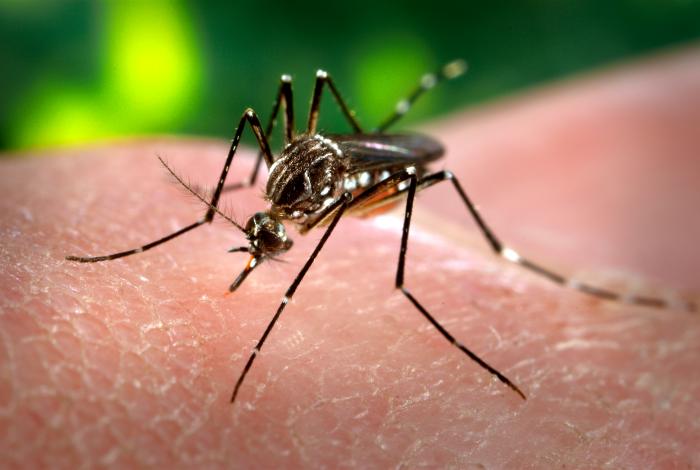A new research article has provider further evidence for the link between the Zika virus and cases of microcephaly.
 The case study, published today in Lancet Infectious Diseases, analysed amniotic fluid samples from two pregnant women from the state of Paraíba in Brazil whose fetuses had been diagnosed with microcephaly – underdevelopment of the brain and skull.
The case study, published today in Lancet Infectious Diseases, analysed amniotic fluid samples from two pregnant women from the state of Paraíba in Brazil whose fetuses had been diagnosed with microcephaly – underdevelopment of the brain and skull.
DNA from the Zika virus and antibodies produced in response to the infection were detected in samples, providing evidence that Zika virus can cross the placenta. The authors note that the results are not proof that Zika causes microcephaly but say the findings strengthen the assumed association between the virus and cases of microcephaly in babies in Brazil.
Our colleagues at the UK SMC collected the following expert commentary.
Dr Nathalie MacDermott, Clinical Research Fellow, Imperial College London, said:
“The paper published today by Calvet and colleagues, describing the presence of Zika virus in the amniotic fluid of two women who had symptoms of Zika-like infection during the first and second trimester of pregnancy, and whose infants were identified to have microcephaly on antenatal ultrasound scan, adds further evidence to the possible association between Zika virus infection in pregnancy and congenital abnormalities in the developing infant.
“This paper demonstrates that Zika virus is able to cross the placenta and reside in the amniotic fluid, but it does not demonstrate that Zika virus was the causative agent in the congenital abnormalities of the infants. It is however complemented by two papers recently published in the New England Journal of Medicine and Morbidity and Mortality Weekly Report which show evidence of Zika virus infection in the brains of infants with microcephaly who were either terminated in pregnancy or who died shortly after delivery. These infants did not demonstrate any other abnormalities in other organ systems, nor was the virus present in other organ systems, which suggests Zika virus has a predisposition for infecting neural tissue in these infants, in other words a neurotropism.
“This, as commented by Calvet and colleagues, is an area which now requires further research to confirm whether there is a causative link between Zika virus and congenital abnormalities of the central nervous system.
“It is important to note that while Calvet et al refer to a 20 times increase in incidence of microcephaly in Brazil, it must be emphasised that these are not confirmed cases of microcephaly. This increase is the increase in reported suspect cases which covers a broad range of situations; as has been seen recently, many of these reported cases when investigated do not meet the agreed definition of a confirmed case of microcephaly and so the true increased incidence of microcephaly in Brazil is still being determined.
“While the authors refer to Chikungunya as a potential cause of microcephaly in neonates caution must be added to this reference. Chikungunya has not been demonstrated to cause congenital microcephaly, the reference referred to in this paper describes neonatal infection with Chikungunya through vertical transmission from the mother shortly before or at the time of delivery of the infant, resulting in some infants being acutely unwell with a meningo-encephalitis/encephalopathy. This resulted in the development of neurodevelopmental problems and microcephaly in a subset of infected infants, this would be deemed to have been as a result of a perinatal not early prenatal insult. The pathogenesis of this is very different to the evolving understanding of the congenital microcephaly being described that may be linked to Zika virus, which appears to resemble more closely that of congenital infections such as Cytomegalovirus.”
Prof Jimmy Whitworth, Professor of International Public Health, London School of Hygiene & Tropical Medicine, said:
“This study does strengthen the body of evidence that Zika virus is the cause of fetal microcephaly in Brazil. The investigators have shown that the virus crossed the placental barrier during the first and second trimesters of pregnancy in two women with fever and rash.
“Importantly they did not find evidence of any other of the main infections known to cause microcephaly. Studies of this sort can show an association between Zika and microcephaly but cannot show that Zika virus definitely caused the microcephaly.
“This will require the accumulation of evidence from a variety of studies from different perspectives. Questions that we urgently need to answer include what is the added risk of microcephaly if a woman has Zika virus infection in pregnancy, is the timing of infection during pregnancy important, and does Zika virus infection alone cause this birth defect or is a co-factor involved.
“Interestingly this study suggests very close resemblance of the virus recovered from these women in Brazil with viruses recovered in French Polynesia in 2013, but only about 90% resemblance with Zika viruses from Uganda. This raises questions about how effective pre-existing immunity in Africa populations would be if the outbreak in Latin America were to spread to Africa.”